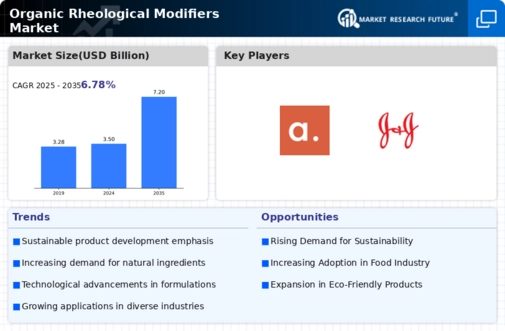Market Trends
Key Emerging Trends in the Organic Rheological Modifiers Market
The dynamic chemical and materials industries are affecting the organic rheological modifier industry. Organic rheological modifiers, which influence material flow and consistency, are changing in demand and use. These modifiers are becoming more popular in cosmetics and personal care. Creams, lotions, and gels have texture and stability thanks to organic rheological modifiers. Organic rheological modifiers are in demand as consumers become more aware of personal care components, harmonizing with the industry's focus on natural and sustainable formulations.
In the paints & coatings business, organic rheological modifiers are in high demand. These modifiers are essential for modifying paint and coating viscosity and optimizing application. As worldwide building and infrastructure projects grow, demand for high-performance paints and coatings rises, increasing the usage of organic rheological modifiers to improve quality and application.
The organic rheological modifiers market is also improving product formulations for industry needs. Manufacturers are spending in R&D to manufacture revolutionary modifiers that solve application problems. Modifiers for water-based systems, low-VOC formulations, and extreme environmental performance are included. Innovation is helping the sector create customized solutions for changing market demands.
Chemical industry regulations are emphasizing sustainable and environmentally friendly alternatives, including rheological modifiers. Manufacturers are complying with environmental and safety regulations. This trend shows the industry's commitment to sustainability and chemical additives' environmental impact.
Demand is also growing geographically, especially in emerging economies. In Asia-Pacific, rapid urbanization, infrastructure expansion, and a growing middle class are driving demand for organic rheological modifiers in construction, paints, and personal care goods. These nations' growing markets provide manufacturers possibilities to develop a significant presence and meet varied sectors' needs.
Food and beverage companies are using organic rheological modifiers more. Sauces, dressings, and beverages benefit from these modifiers' texture and stability. Consumers want more natural and transparent ingredient lists, therefore organic rheological modifiers are replacing traditional additives in the food business.

















Leave a Comment